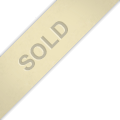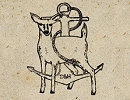Contact Seller
Doe And Hope
Tel07729 213013Please quote Antiques Atlas.


 Three 17th Century Panels.
Three 17th Century Panels.
 King Ninus King Latin King Robart of Salley Abbey
King Ninus King Latin King Robart of Salley Abbey
 A Late 17th Century Oak Carving.
A Late 17th Century Oak Carving.
 A Pair Of 16th/17th Century Linenfold Panels.
A Pair Of 16th/17th Century Linenfold Panels.
 Mediaeval Oak Carving of Christ in the Tomb
Mediaeval Oak Carving of Christ in the Tomb
 A Pair Of 17th Century Lions Mask Panels
A Pair Of 17th Century Lions Mask Panels
 Pair of 16th Century Oak Panels
Pair of 16th Century Oak Panels
 A Pair Of 17th Century Carved Walnut Panels.
A Pair Of 17th Century Carved Walnut Panels.
 Decorative Edwardian Carved Walnut Panel.
Decorative Edwardian Carved Walnut Panel.
 16th Century Religious Panel of Souls in Purgatory
16th Century Religious Panel of Souls in Purgatory
 A PAIR of 17th/18th century carved oak appliques 5137
A PAIR of 17th/18th century carved oak appliques 5137
 17th Century / Earlier Indo-Persian Carving,c1600
17th Century / Earlier Indo-Persian Carving,c1600
Non UK callers :
+44 7729 213013
Pair of Large c.1880 American Circus Wagon Panels


The rare and large pair of nineteenth century American circus wagon relief panels at almost four feet wide each carved in three sections in softwood modelled as peacocks with maidens below, with remnants of polychrome painted decoration, survive from the last quarter of the nineteenth century.
The condition of the relief panels is as to be expected from these nomadic pieces that would have travelled across America, in direct exposure to the elements, in all conditions. There is a small amount of splitting and the surfaces are rather dry and coarse. One panel displays more of the original polychrome decoration than the other and one does have a small section of loss to its upper edge. Each panel has scuffs and small chips but no cracks or major areas of damage. There is no sign of worm and to the reverses we see the original iron mounts, which, co-join each section together.
Circus parades in America started in earnest in 1796 when Jacob Crowninshield, captain of the ship America, sailed into New York harbour with a strange cargo, a three-year old elephant, the first to be seen in America, bought for $450 and sold for $10,000 to a Philadephian named Owen who took it on tours until around 1818, and so it began. By the 1820s there were many shows with wild, exotic animals in cages that were on the road. By 1828, Buckley and Wick’s circus ventured out into the eastern areas with forty horses, eight wagons, thirty-five people and a tent of seventy-five feet. For the next twenty or more years to around 1845 circus wagons themselves were strong but simple affairs of light construction and with no ornamentation. By the middle of the 1850s the band chariot and ornamental wagons were part of the circus. Two shops, The Stephensons and the Fielding Brothers workshops were both capable of constructing these highly ornamental and expensive wagons.
In the Autumn of 1881, around about the time these particular carvings were fashioned, a large number of carvings were commissioned for a new group of circus wagons known as Tableaux Dens. Harper’s Weekly reported
“One shop in New York made forty figures, costing from $25 to $100 each for a circus last winter. They were figures of gods and goddesses, and beasts, birds, and reptiles, and were fastened on the golden chariots that appear in the street processions. When they are to be planted on the sides of the chariots, half figures are used but when they are to be placed on the corners they are carved complete and afterward cut out in the back to fit”
$100 in 1880, for the more expensive carvings, would amount to approximately $2,220 in today’s money (or £1325).
For example, birds were carved for the aviary cage wagon (these carvings possibly for this purpose), crocodiles and snakes for the reptile cage and these carvings could have therefore represented the peacock, birds in general, or perhaps a mixture of animals deriving from India. There was also 'Continent tableaux wagons' of 1877 whereby each wagon had a country designated to it as its theme so for example lions would adorn the African wagons and eagles the American wagons. These panels could well have been from the wagon representing the country of India.
The likely makers of these carvings was either the Fielding brothers of New York, Samuel A.Robb, who opened in 1877, or The Sebastian Wagon Company which opened in 1853. Further reading on this topic and this type of carving can be found in the book ‘Artists in Wood’ by Frederick Fried.
These carvings came directly from the estate of the late Mr. Jamieson (1954 – 2012). Billy Jamieson was a passionate collector and highly respected dealer of tribal and ethnographic material, primitive artifacts, art deco, and in his words “oddities and curiosities”. In the 15 years that he was a dealer, Jamieson sold artifacts to the art world's biggest names - the ROM, the Metropolitan Museum of Art, Sotheby's and Christie's auction houses - as well as to private clients such as Steven Tyler and Mick Jagger. He was also celebrated for his purchase of the historic Niagara Falls Museum, and its nine mummies, one of which was King Ramses I, which was repatriated to Egypt. These carvings are part of a consignment of fifteen pieces from Jamieson’s collection that we have had shipped over from Canada this year.
Many people are fascinated by fairground art and by the gorgeously painted and carved creatures that enchanted us from a young age. The world's finest collection of fairground art was amassed in the 1960s and 1970s by Lord and Lady Bangor when it was generally undervalued and underpriced. When Christie's auctioned their collection at Wookey Hole, Somerset in 1997, the sale attracted huge interest and massive sale results. Collectors flocked not just because of the finery of the collection, but because it is now quite rare to find or be able to purchase fairground art in the open market. Fairground art is highly collectable and the earlier it is, the better.
Large? Check. Unusual? Check. A pair? Check. Rare? Check. Decorative? Check.
SellerDoe And Hope
View all stock from
Doe And Hope

 Private dealer, By appointment only
Private dealer, By appointment only
The Onion Barn, Shoe Cottage,
15 High Street, Blunham,
Bedfordshire, MK44 3NL.
MK44 3NL
Tel : 07729 213013
Non UK callers : +44 7729 213013
Get directions to Doe And Hope
The condition of the relief panels is as to be expected from these nomadic pieces that would have travelled across America, in direct exposure to the elements, in all conditions. There is a small amount of splitting and the surfaces are rather dry and coarse. One panel displays more of the original polychrome decoration than the other and one does have a small section of loss to its upper edge. Each panel has scuffs and small chips but no cracks or major areas of damage. There is no sign of worm and to the reverses we see the original iron mounts, which, co-join each section together.
Circus parades in America started in earnest in 1796 when Jacob Crowninshield, captain of the ship America, sailed into New York harbour with a strange cargo, a three-year old elephant, the first to be seen in America, bought for $450 and sold for $10,000 to a Philadephian named Owen who took it on tours until around 1818, and so it began. By the 1820s there were many shows with wild, exotic animals in cages that were on the road. By 1828, Buckley and Wick’s circus ventured out into the eastern areas with forty horses, eight wagons, thirty-five people and a tent of seventy-five feet. For the next twenty or more years to around 1845 circus wagons themselves were strong but simple affairs of light construction and with no ornamentation. By the middle of the 1850s the band chariot and ornamental wagons were part of the circus. Two shops, The Stephensons and the Fielding Brothers workshops were both capable of constructing these highly ornamental and expensive wagons.
In the Autumn of 1881, around about the time these particular carvings were fashioned, a large number of carvings were commissioned for a new group of circus wagons known as Tableaux Dens. Harper’s Weekly reported
“One shop in New York made forty figures, costing from $25 to $100 each for a circus last winter. They were figures of gods and goddesses, and beasts, birds, and reptiles, and were fastened on the golden chariots that appear in the street processions. When they are to be planted on the sides of the chariots, half figures are used but when they are to be placed on the corners they are carved complete and afterward cut out in the back to fit”
$100 in 1880, for the more expensive carvings, would amount to approximately $2,220 in today’s money (or £1325).
For example, birds were carved for the aviary cage wagon (these carvings possibly for this purpose), crocodiles and snakes for the reptile cage and these carvings could have therefore represented the peacock, birds in general, or perhaps a mixture of animals deriving from India. There was also 'Continent tableaux wagons' of 1877 whereby each wagon had a country designated to it as its theme so for example lions would adorn the African wagons and eagles the American wagons. These panels could well have been from the wagon representing the country of India.
The likely makers of these carvings was either the Fielding brothers of New York, Samuel A.Robb, who opened in 1877, or The Sebastian Wagon Company which opened in 1853. Further reading on this topic and this type of carving can be found in the book ‘Artists in Wood’ by Frederick Fried.
These carvings came directly from the estate of the late Mr. Jamieson (1954 – 2012). Billy Jamieson was a passionate collector and highly respected dealer of tribal and ethnographic material, primitive artifacts, art deco, and in his words “oddities and curiosities”. In the 15 years that he was a dealer, Jamieson sold artifacts to the art world's biggest names - the ROM, the Metropolitan Museum of Art, Sotheby's and Christie's auction houses - as well as to private clients such as Steven Tyler and Mick Jagger. He was also celebrated for his purchase of the historic Niagara Falls Museum, and its nine mummies, one of which was King Ramses I, which was repatriated to Egypt. These carvings are part of a consignment of fifteen pieces from Jamieson’s collection that we have had shipped over from Canada this year.
Many people are fascinated by fairground art and by the gorgeously painted and carved creatures that enchanted us from a young age. The world's finest collection of fairground art was amassed in the 1960s and 1970s by Lord and Lady Bangor when it was generally undervalued and underpriced. When Christie's auctioned their collection at Wookey Hole, Somerset in 1997, the sale attracted huge interest and massive sale results. Collectors flocked not just because of the finery of the collection, but because it is now quite rare to find or be able to purchase fairground art in the open market. Fairground art is highly collectable and the earlier it is, the better.
Large? Check. Unusual? Check. A pair? Check. Rare? Check. Decorative? Check.
Price The price has been listed in British Pounds.
Conversion rates as of 4/DEC/2025. Euro & Dollar prices will vary and should only be used as a guide.
Always confirm final price with dealer. Phone or visit the website to buy, Free UK shipping.
DimensionsHeight 29 inches
Width 45 inches
Depth 2.75 inches (all approximate & at maximums)
Category Antique Wood Carvings
Date c.1880
Late Victorian Antiques Material Wood
Origin American
Condition The condition of the relief panels is as to be expected from these nomadic pieces that would have travelled across America, in direct exposure to the elements, in all conditions. There is a small amount of splitting and the surfaces are rather dry and coarse. One panel displays more of the original polychrome decoration than the other and one does have a small section of loss to its upper edge. Each panel has scuffs and small chips but no cracks or major areas of damage. There is no sign of worm and to the reverses we see the original iron mounts, which, co-join each section together.
Item code as155a1128
Status Sold
£2800.00 
$3744.44 
€3207.68 

$

€

Conversion rates as of 4/DEC/2025. Euro & Dollar prices will vary and should only be used as a guide.
Always confirm final price with dealer. Phone or visit the website to buy, Free UK shipping.
View all stock from
Doe And Hope

 Private dealer, By appointment only
Private dealer, By appointment onlyThe Onion Barn, Shoe Cottage,
15 High Street, Blunham,
Bedfordshire, MK44 3NL.
MK44 3NL
Tel : 07729 213013
Non UK callers : +44 7729 213013
Get directions to Doe And Hope
You may also be interested in
 Three 17th Century Panels.
Three 17th Century Panels.
 King Ninus King Latin King Robart of Salley Abbey
King Ninus King Latin King Robart of Salley Abbey
 A Late 17th Century Oak Carving.
A Late 17th Century Oak Carving.
 A Pair Of 16th/17th Century Linenfold Panels.
A Pair Of 16th/17th Century Linenfold Panels.
 Mediaeval Oak Carving of Christ in the Tomb
Mediaeval Oak Carving of Christ in the Tomb
 A Pair Of 17th Century Lions Mask Panels
A Pair Of 17th Century Lions Mask Panels
 Pair of 16th Century Oak Panels
Pair of 16th Century Oak Panels
 A Pair Of 17th Century Carved Walnut Panels.
A Pair Of 17th Century Carved Walnut Panels.
 Decorative Edwardian Carved Walnut Panel.
Decorative Edwardian Carved Walnut Panel.
 16th Century Religious Panel of Souls in Purgatory
16th Century Religious Panel of Souls in Purgatory
 A PAIR of 17th/18th century carved oak appliques 5137
A PAIR of 17th/18th century carved oak appliques 5137
 17th Century / Earlier Indo-Persian Carving,c1600
17th Century / Earlier Indo-Persian Carving,c1600








